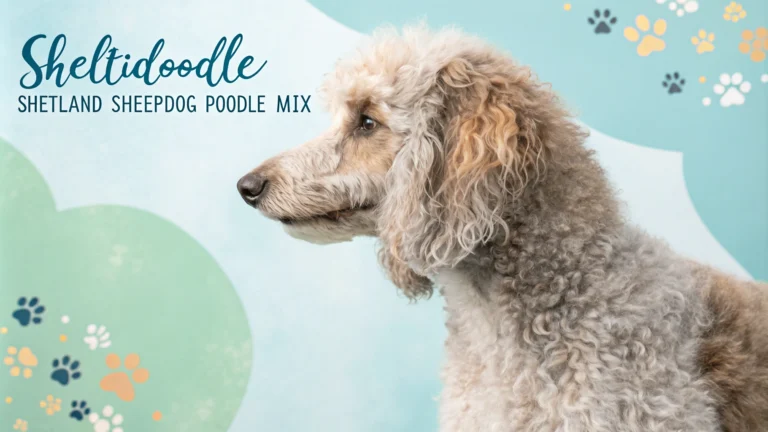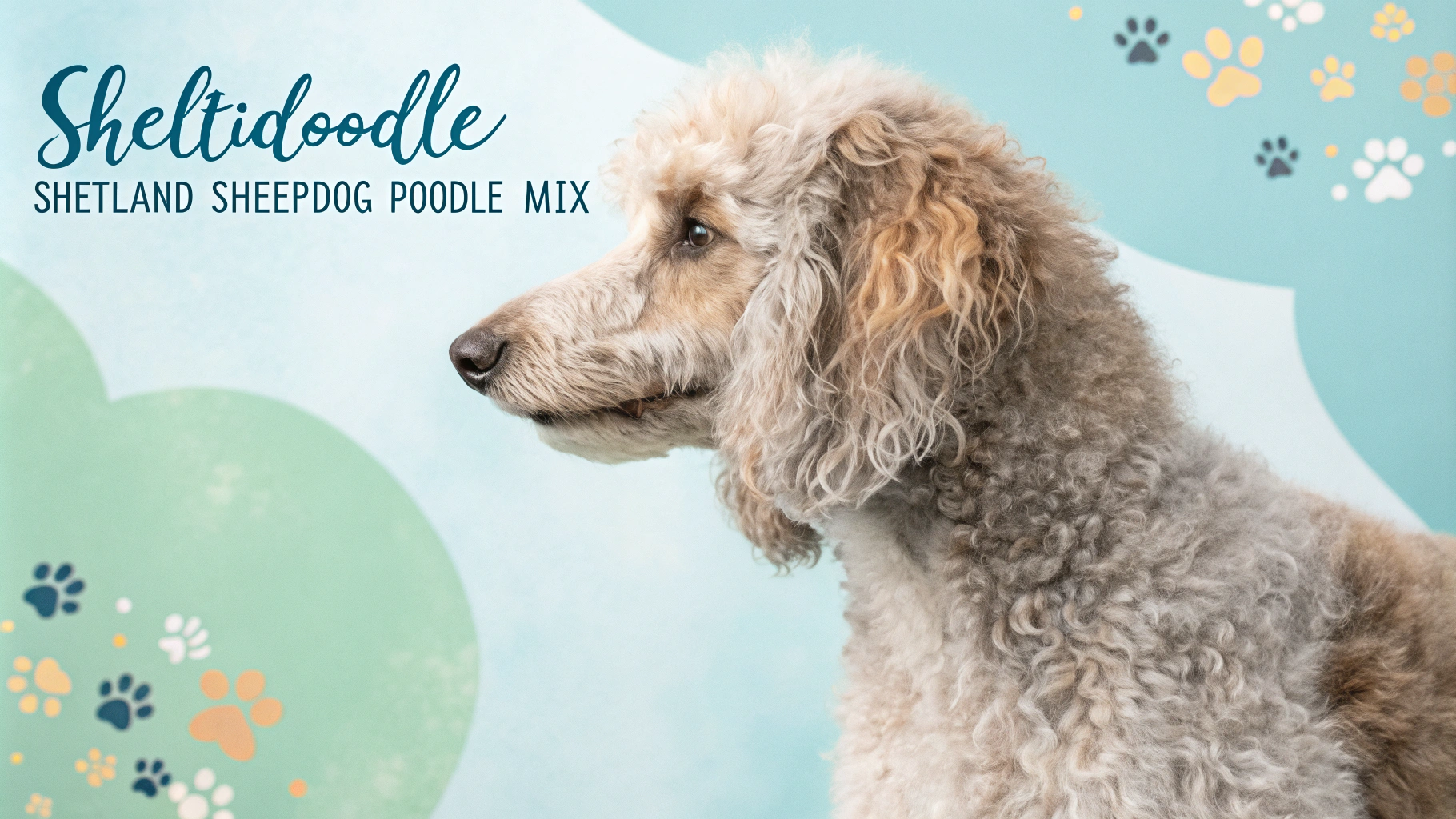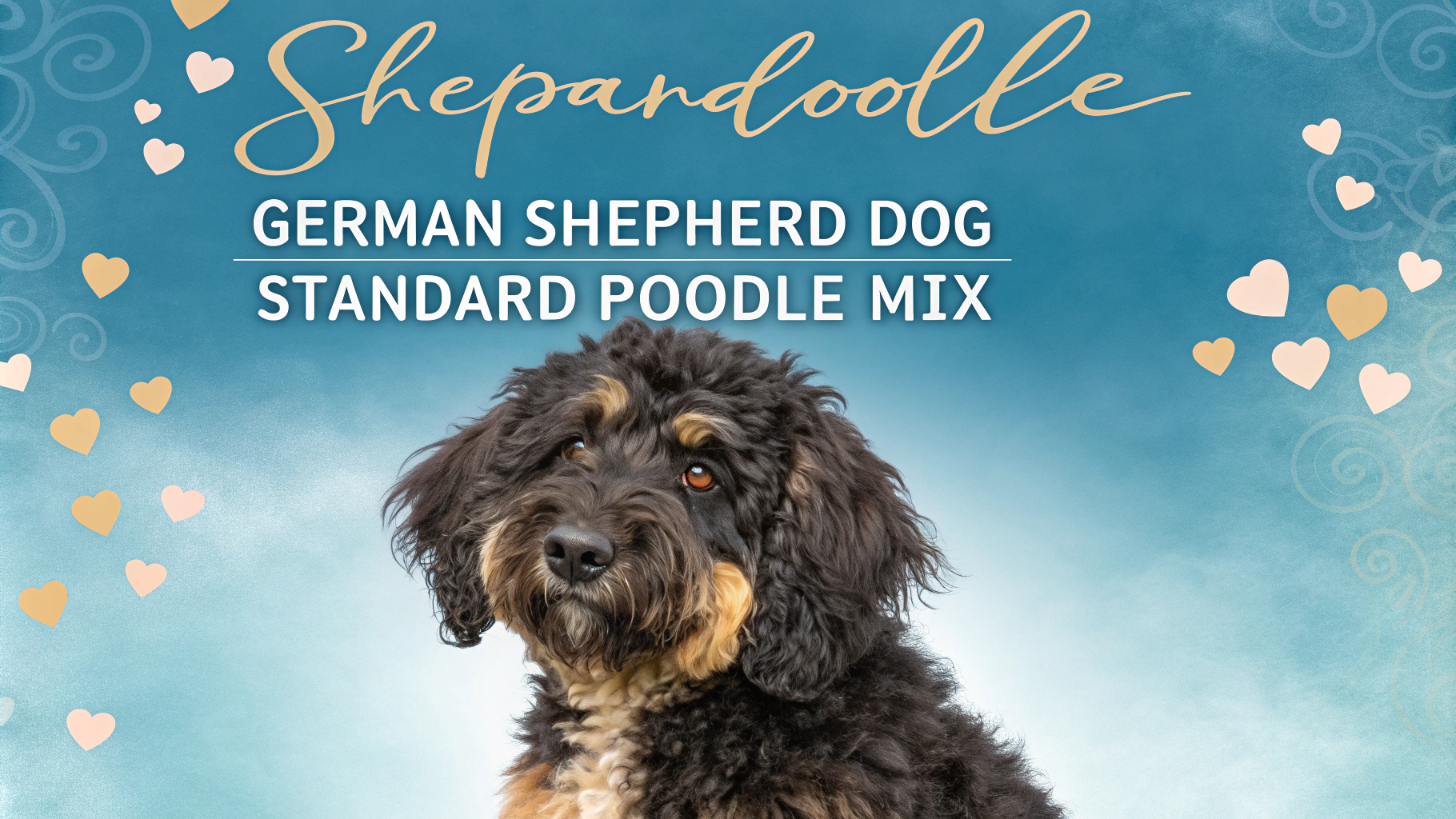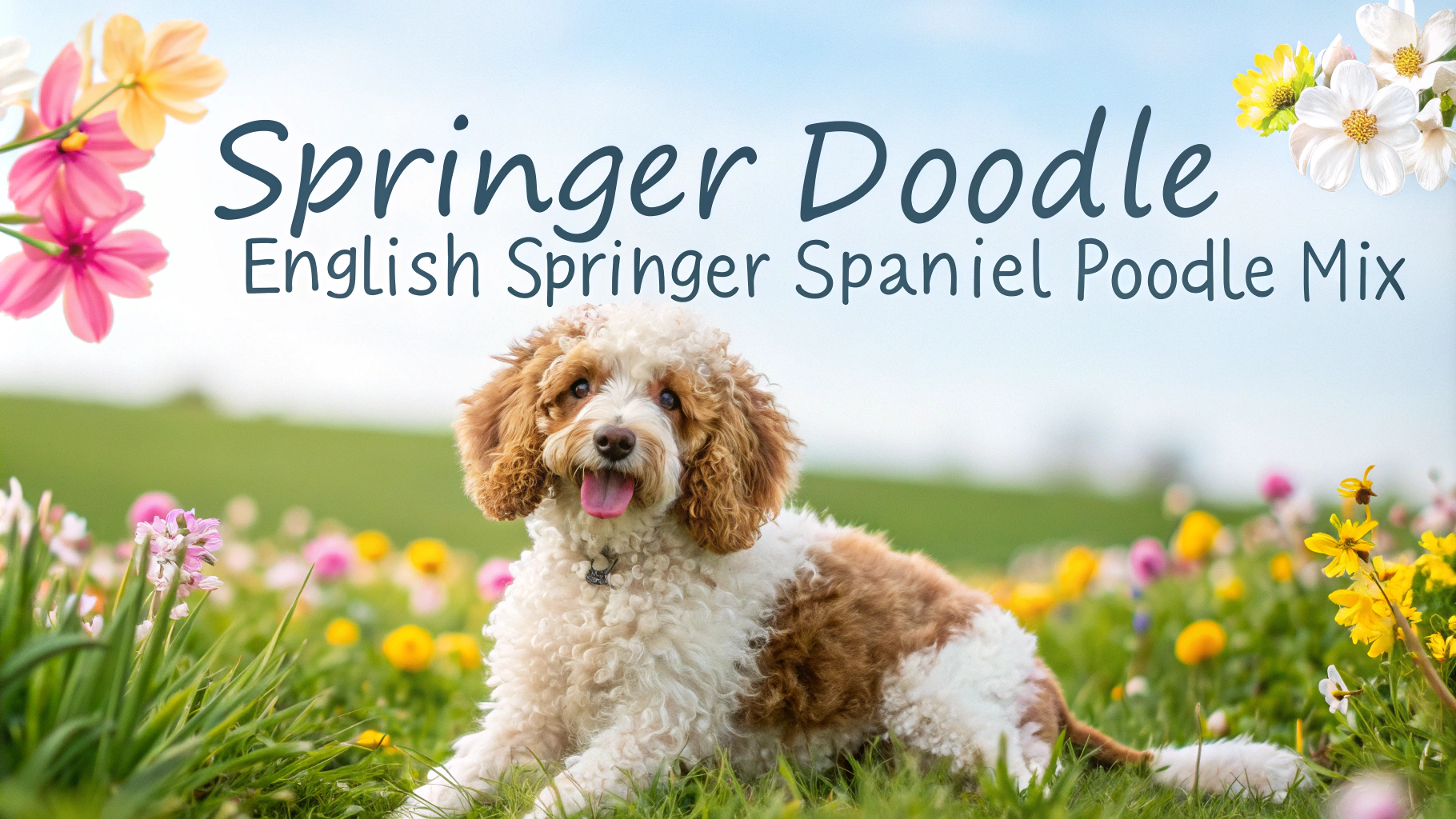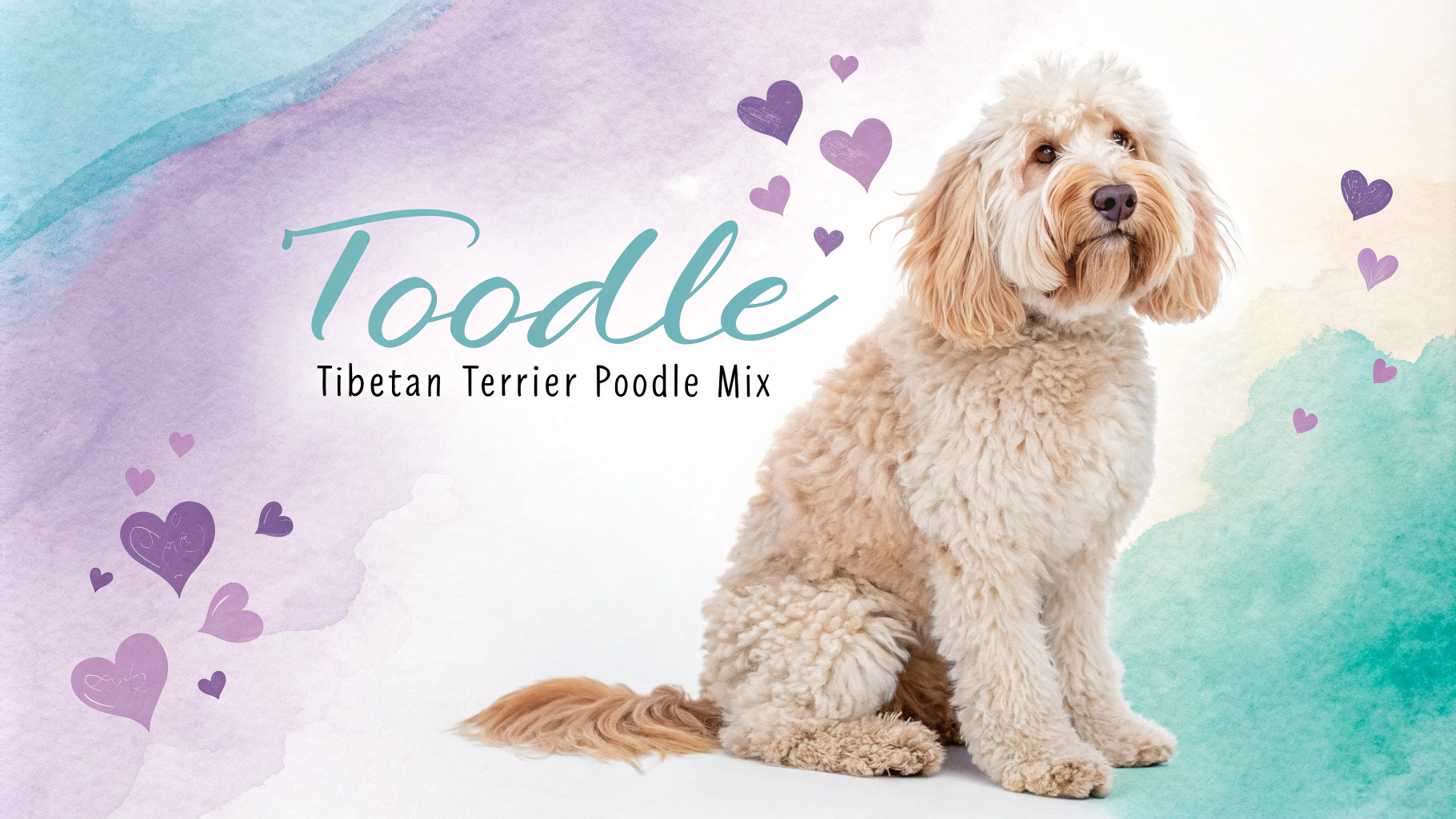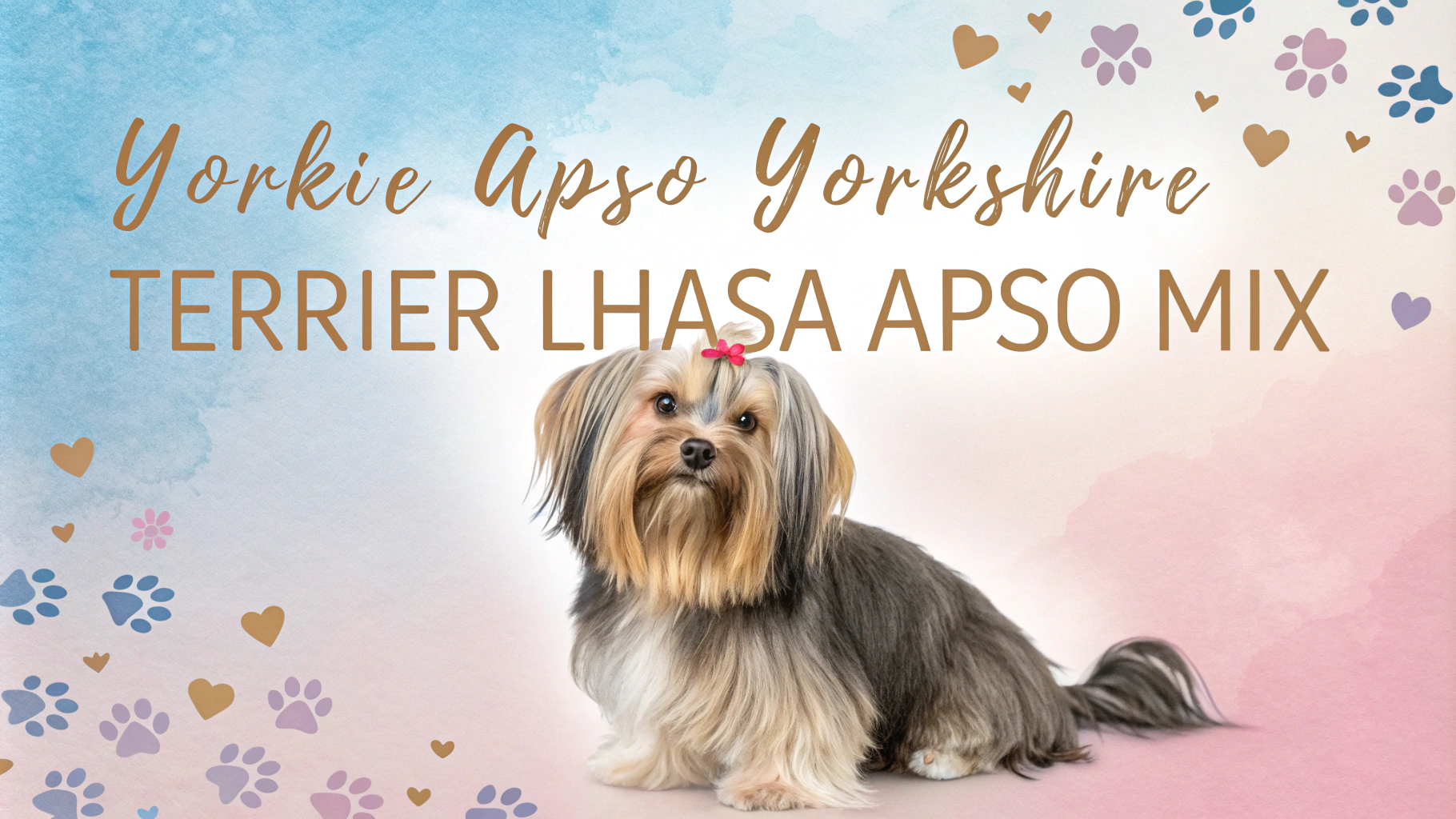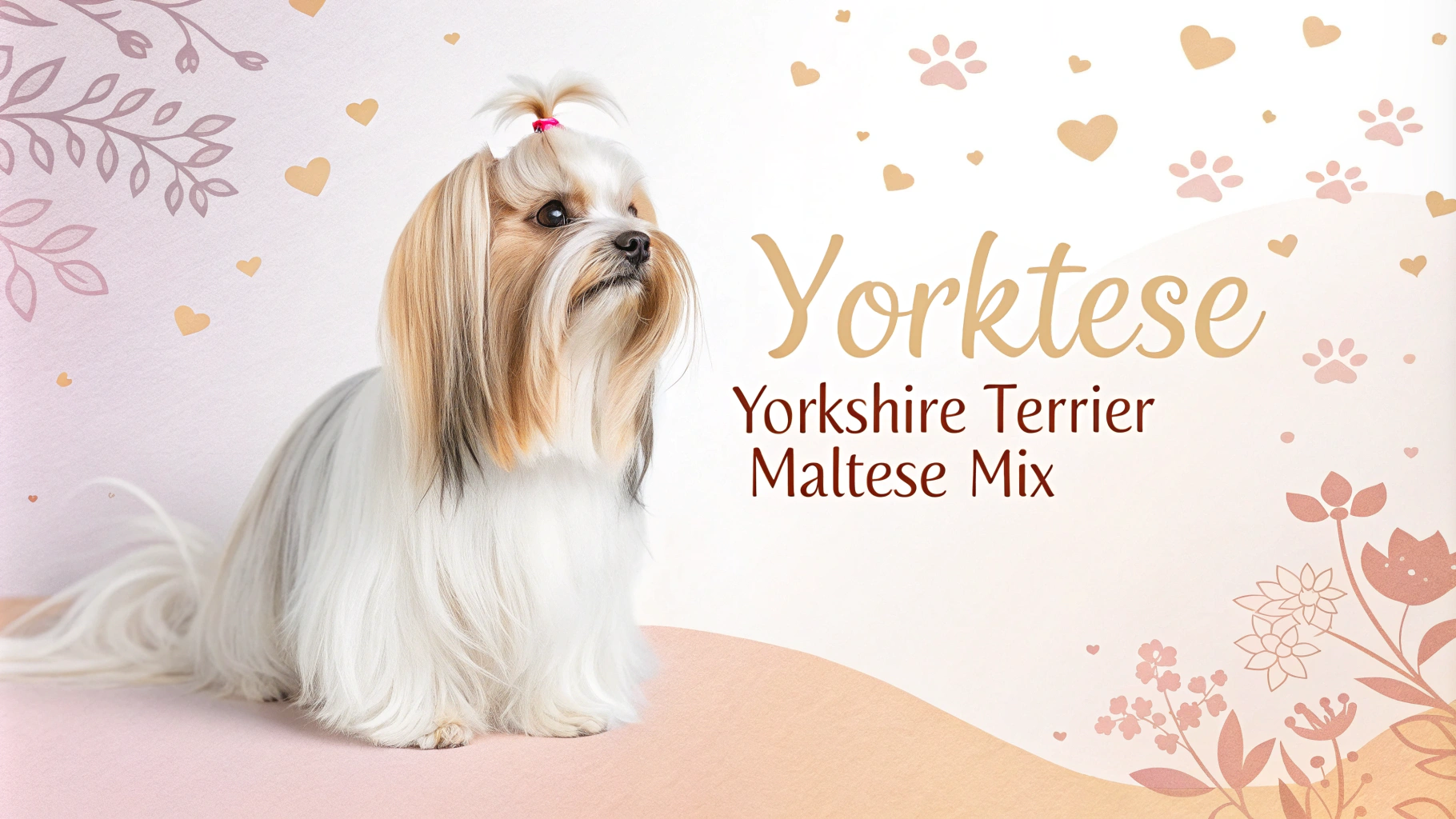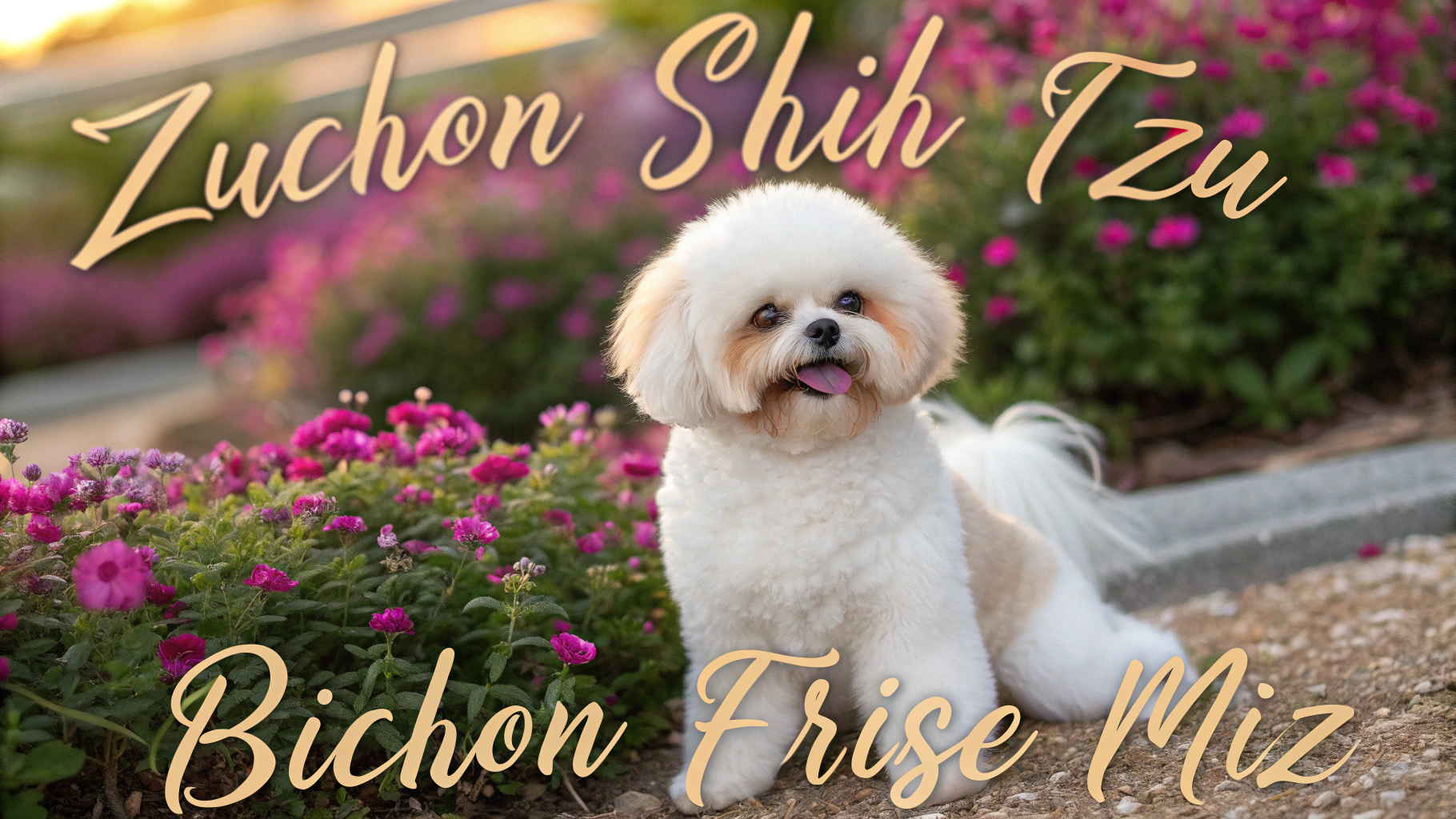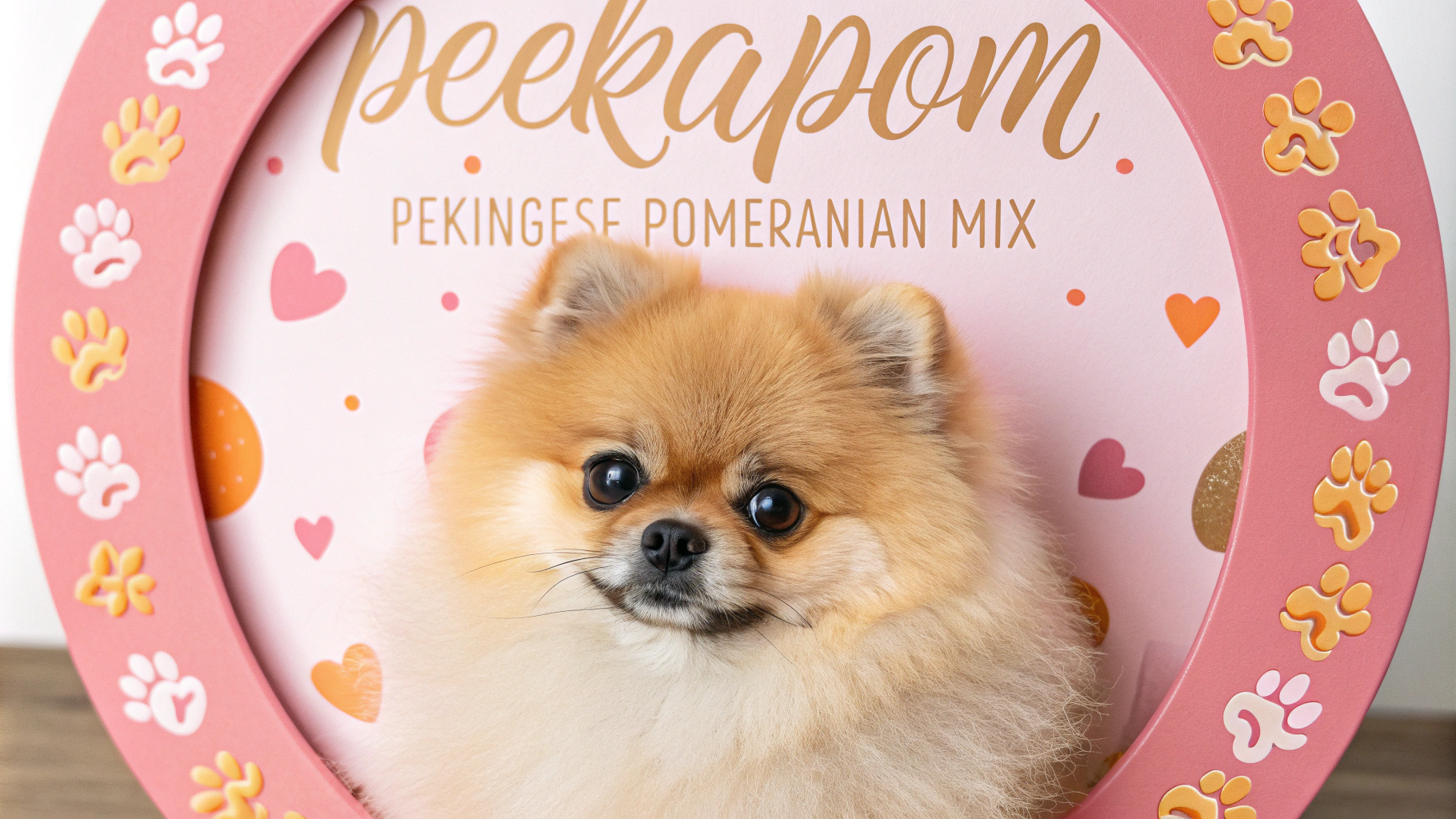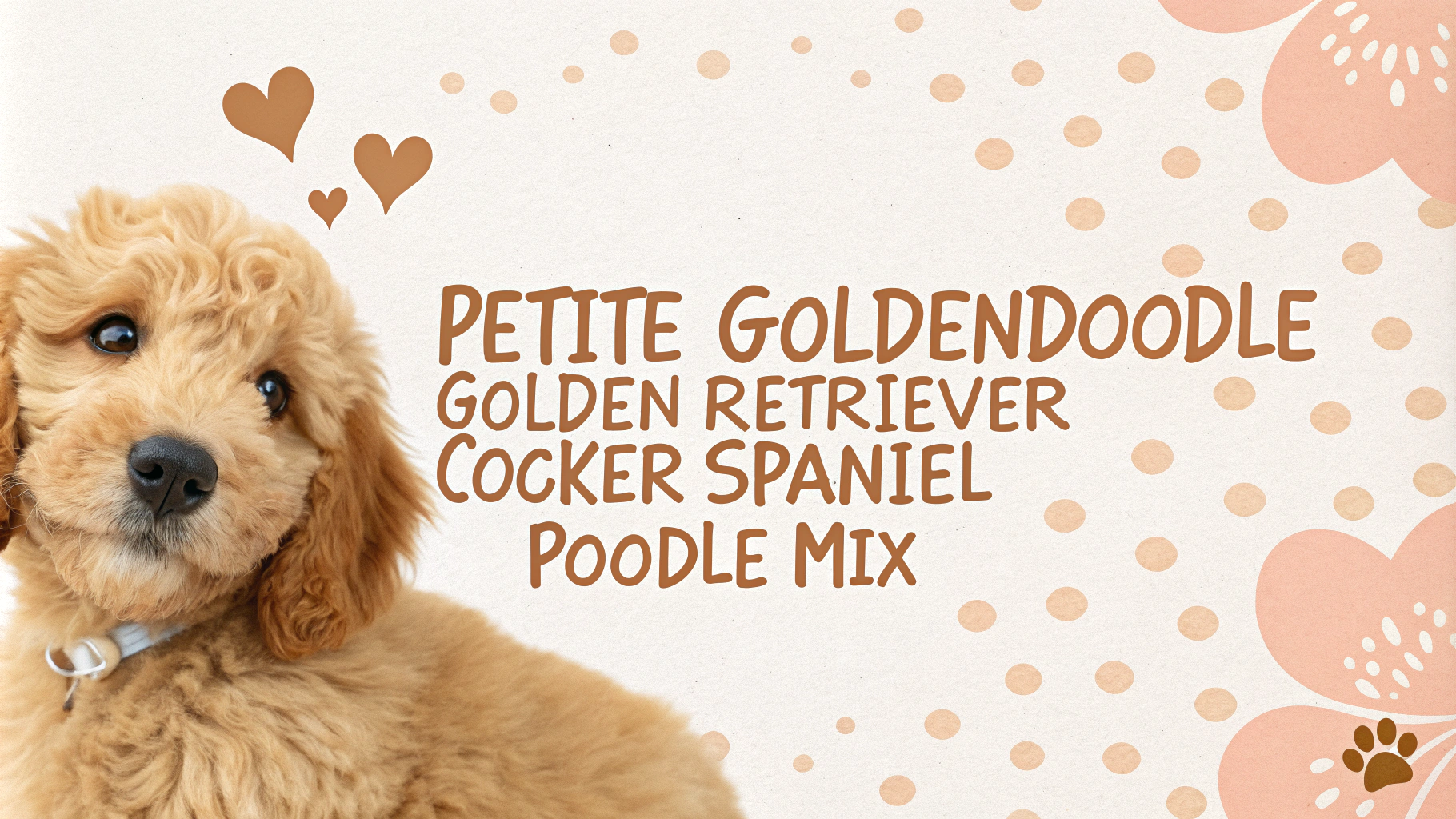The Sheltidoodle is a mixed breed dog resulting from crossing a Shetland Sheepdog (Sheltie) with a Poodle. This designer breed combines the intelligence and herding instincts of the Sheltie with the hypoallergenic coat and quick-wittedness of the Poodle. Sheltidoodles are known for their friendly nature, high energy levels, and adaptability to various living situations. As with any mixed breed, their appearance and temperament can vary depending on which parent breed they take after more.
2. Key Facts
- Size: Small to medium (10-20 inches tall, 15-30 pounds)
- Lifespan: 12-15 years
- Coat: Medium to long, wavy or curly, low-shedding
- Colors: Various, including black, white, brown, sable, and combinations
- Temperament: Intelligent, loyal, energetic, and affectionate
- Good with children: Yes, when properly socialized
- Good with other pets: Generally yes, but may have herding tendencies
- Exercise needs: Moderate to high
- Trainability: High, responds well to positive reinforcement
3. Character Traits
Sheltidoodles inherit a blend of personality traits from their parent breeds, resulting in a smart, loyal, and energetic companion. They are typically friendly and affectionate with their family members, often forming strong bonds with their owners. These dogs are known for their high intelligence, which makes them quick learners but also means they require mental stimulation to prevent boredom.
Like Shelties, Sheltidoodles may have herding instincts, which can manifest as a tendency to chase or nip at heels, especially with children or other pets. However, this behavior can be managed with proper training and socialization. They are generally good with children and other pets when raised together, but early socialization is crucial to ensure they develop into well-rounded adults.
Sheltidoodles are often alert and make excellent watchdogs, inheriting the Sheltie’s tendency to bark at unfamiliar sounds or people. This trait can be both a benefit and a challenge, depending on the living situation. They are typically adaptable to various environments but thrive on human companionship and may develop separation anxiety if left alone for long periods.
4. History & Origins
The Sheltidoodle is a relatively new designer breed, likely originating within the last few decades as part of the growing trend of creating mixed breed dogs. While the exact origins of the Sheltidoodle are not well-documented, understanding the history of its parent breeds provides insight into the mix.
The Shetland Sheepdog, or Sheltie, originated in the Shetland Islands of Scotland. Initially bred to herd and protect small livestock, Shelties were developed to be smaller versions of Rough Collies, adapted to the harsh island environment. They were recognized by the American Kennel Club in 1911.
Poodles, despite their association with France, likely originated in Germany as water retrievers. They come in three sizes: Standard, Miniature, and Toy. Poodles are known for their intelligence, elegance, and hypoallergenic coats. The breed has been recognized by kennel clubs worldwide for over a century.
The Sheltidoodle was likely created to combine the Sheltie’s herding instincts and loyalty with the Poodle’s intelligence and low-shedding coat. As with many designer breeds, the goal was to produce a dog with the best traits of both parent breeds while potentially reducing health issues associated with purebreds.
Health Concerns
The Sheltidoodle, like many mixed breeds, can inherit health issues from both parent breeds. Common health concerns may include:
- Hip dysplasia: A genetic condition affecting the hip joint
- Progressive retinal atrophy (PRA): An inherited eye disorder that can lead to blindness
- Von Willebrand’s disease: A blood clotting disorder
- Hypothyroidism: An underactive thyroid gland
- Skin allergies: Inherited from the Poodle parent
Regular veterinary check-ups, genetic testing, and maintaining a healthy lifestyle can help prevent or manage these conditions. It’s important to obtain your Sheltidoodle from a reputable breeder who conducts health screenings on parent dogs.
Exercise Needs
Sheltidoodles are energetic dogs that require regular exercise to maintain their physical and mental well-being. They typically need:
- Daily walks: At least 30-60 minutes of brisk walking or jogging
- Playtime: Interactive games like fetch, frisbee, or agility exercises
- Mental stimulation: Puzzle toys, training sessions, or obedience work
These dogs excel in various dog sports and activities, including agility, obedience, and herding trials. Providing a mix of physical exercise and mental stimulation is crucial to prevent boredom and potential destructive behaviors. Adjust the exercise routine based on your dog’s age, health, and energy level.
Space Requirements
Sheltidoodles are adaptable dogs that can thrive in various living environments, provided they receive adequate exercise and attention. Their space requirements include:
- Indoor space: Sufficient room to move around comfortably
- Outdoor access: A securely fenced yard for play and exploration
- Exercise area: Access to parks or open spaces for regular exercise
While they can adapt to apartment living, Sheltidoodles generally do better in homes with some outdoor space. They enjoy having a yard to play and explore, but it’s not a necessity if they receive adequate exercise through walks and outings. Regardless of living space, these dogs thrive on human companionship and should not be left alone for extended periods.
Nutrition & Feeding
Proper nutrition is essential for maintaining the health and well-being of your Sheltidoodle. Consider the following guidelines:
- High-quality dog food: Choose a premium kibble formulated for medium-sized, active dogs
- Portion control: Follow feeding guidelines based on your dog’s age, weight, and activity level
- Meal frequency: Typically, 2-3 meals per day for adults, more frequent for puppies
- Fresh water: Ensure constant access to clean, fresh water
Avoid overfeeding, as Sheltidoodles can be prone to weight gain. Consult with your veterinarian to determine the best diet plan for your individual dog, taking into account any specific health concerns or dietary requirements. Some Sheltidoodles may have food sensitivities inherited from their Poodle parent, so monitor for any adverse reactions to new foods.
Grooming Tips
Sheltidoodles typically have a moderate to high-maintenance coat that requires regular grooming. Their coat can vary in texture and length depending on which parent breed they take after more. Here are some essential grooming tips:
- Brushing: Brush your Sheltidoodle’s coat 3-4 times a week, or daily during shedding seasons. Use a slicker brush and metal comb to remove tangles and prevent matting.
- Bathing: Bathe your dog every 4-6 weeks, or as needed. Use a mild dog shampoo and ensure thorough rinsing.
- Trimming: Regular trimming every 6-8 weeks helps maintain coat health and appearance. Consider professional grooming if you’re not comfortable doing it yourself.
- Ear care: Check and clean ears weekly to prevent infections, especially if your dog has floppy ears like a Poodle.
- Dental hygiene: Brush teeth 2-3 times a week to maintain oral health and prevent dental issues.
- Nail trimming: Trim nails every 2-3 weeks or as needed to prevent discomfort and walking issues.
Remember that grooming sessions are also an excellent opportunity to check for any skin issues, lumps, or abnormalities. Regular grooming not only keeps your Sheltidoodle looking great but also contributes to their overall health and well-being.
Training Approach
Sheltidoodles are generally intelligent and eager to please, making them relatively easy to train. However, they may inherit the Shetland Sheepdog’s tendency to be vocal or the Poodle’s occasional stubbornness. Here’s an effective training approach for Sheltidoodles:
- Positive reinforcement: Use treats, praise, and toys to reward good behavior. This breed responds well to encouragement and can become discouraged by harsh corrections.
- Early socialization: Expose your Sheltidoodle to various people, animals, and environments from a young age to prevent shyness or anxiety.
- Consistency: Establish clear rules and stick to them. Consistency helps your dog understand expectations and learn faster.
- Mental stimulation: Incorporate puzzle toys and training games to keep their mind engaged. This breed thrives on mental challenges.
- Obedience training: Start with basic commands like sit, stay, come, and leave it. Gradually progress to more advanced training as they master the basics.
- Agility and tricks: Many Sheltidoodles excel in agility and enjoy learning tricks. These activities can strengthen your bond and provide excellent exercise.
Remember to keep training sessions short (10-15 minutes) but frequent to maintain your dog’s interest and prevent boredom. Patience is key, as some Sheltidoodles may be sensitive to criticism. Always end training sessions on a positive note to keep your dog motivated and eager for the next session.
